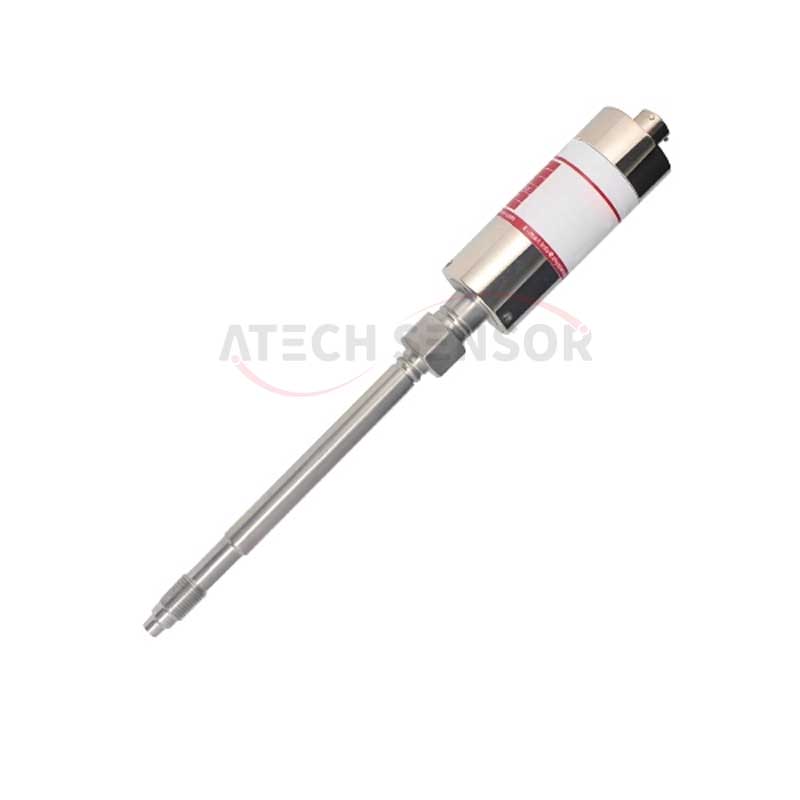High temperature pressure sensor is the most commonly used pressure transmitter in industrial practice. It is widely used in various industrial automatic control environments, involving oil pipelines, water conservancy and hydropower, railway transportation, intelligent buildings, production automatic control, aerospace, military industry, petrochemical, oil wells, electric power, ships, machine tools, pipeline air supply, boilers, furnaces and many other industries.

1. Product Overview
High temperature pressure sensors are designed to measure the pressure of various gases and liquids in high temperature environments. They are mainly used to measure the pressure in boilers, pipelines, high temperature reaction vessels, downhole pressure and pressure in various engine cavities, high temperature oil level and detection, oil well pressure measurement and other fields. The most studied high temperature pressure sensors include semiconductor sensors such as SOS, SOI, SiO2, Poly2Si, as well as sputtered alloy film high temperature pressure sensors, high temperature optical fiber pressure sensors and high temperature capacitive pressure sensors. Compared with piezoresistive pressure sensors, semiconductor capacitive pressure sensors have high sensitivity, good temperature stability, low power consumption, and are only sensitive to pressure, not stress. Therefore, capacitive pressure sensors are widely used in many fields.
The high temperature pressure sensor is composed of a silicon diaphragm, a substrate, a lower electrode and an insulating layer. The lower electrode is located on a thick supported substrate. An insulating layer is evaporated on the electrode. The silicon diaphragm is formed by etching from the front and back sides of a silicon wafer using anisotropic etching technology. The gap between the upper and lower electrodes is determined by the etching depth of the silicon wafer. The silicon diaphragm and the substrate are bonded together using bonding technology to form a silicon diaphragm capacitive pressure sensor with a certain stability.
2. Working Principle
Working principle of high temperature pressure sensor The pressure of the wind pressure sensor acts directly on the diaphragm of the sensor, causing the diaphragm to produce a micro-displacement proportional to the medium pressure, causing the resistance of the sensor to change, and using electronic circuits to detect this change and convert and output a standard signal corresponding to this pressure.
3. Related parameters
Range: -0.1~0~1~150(MPa) Comprehensive accuracy: 0.25%FS, 0.5%FS
Output signal: 4~20mA(two-wire), 0~5V, 1~5V, 0~10V(three-wire)
Power supply voltage: 24DCV(9~36DCV)
Medium temperature: -20~800℃
Ambient temperature: Normal temperature(-20~85℃)
Zero point temperature drift: ≤±0.05%FS℃
Range temperature drift: ≤±0.05%FS℃
Compensation temperature: 0~70℃
Safety overload: 150%FS
Ultimate overload: 200%FS
Response time: 5 mS(up to 90%FS)
Load resistance: Current output type: maximum 800Ω; Voltage output type: greater than 5KΩ
Insulation resistance: greater than 2000MΩ (100VDC)
Sealing level: IP65
Long-term stability performance: 0.1%FS/year
Vibration impact: Output change is less than 0.1%FS within the mechanical vibration frequency range of 20Hz to 1000Hz
4. Product Features
1. Sensor: A device or apparatus that can sense a specified quantity and convert it into a usable output signal according to certain rules. It usually consists of a sensitive element and a conversion element.
① The sensitive element refers to the part of the sensor that can directly (or respond to) the measured value.
② The conversion element refers to the part of the sensor that can convert the amount sensed (or responded) by the sensitive element into an electrical signal for transmission and (or) measurement.
③ When the output is a specified standard signal, it is called a transmitter.
2. Measuring range: the range of values within the permissible error limit.
3. Span: the algebraic difference between the upper and lower limits of the measuring range.
4. Precision: the degree of agreement between the measured result and the true value of the measured quantity.
5. Repeatability: the degree of agreement between the results of multiple consecutive measurements of the same measured quantity under all the following conditions.
6. Resolution: The minimum change in the measured quantity that the sensor can detect within the specified measurement range.
7. Threshold: The minimum change in the measured quantity that can cause a measurable change at the sensor output.
8. Zero position: The state in which the absolute value of the output is the minimum, such as the equilibrium state.
9. Excitation: The external energy (voltage or current) applied to the sensor to make it work properly.
10. Maximum excitation: The maximum value of the excitation voltage or current that can be applied to the sensor under urban conditions.
11. Input impedance: The impedance measured at the input of the sensor when the output is open.
12. Output: The amount of electricity generated by the sensor as a function of the external measured quantity.
13. Output impedance: The impedance measured at the output of the sensor when the input is short-circuited.
14. Zero output: The output of the sensor when the applied measured quantity is zero under urban conditions.
15. Hysteresis: The maximum difference in the output when the measured value increases and decreases within the specified range.
16. Delay: The time delay of the output signal change relative to the input signal change.
17. Drift: The amount of unwanted change in the sensor output that is irrelevant to the measurement in a certain time interval.
18. Zero drift: The change in the zero output at a specified time interval and under indoor conditions.
19. Sensitivity: The ratio of the increment of the sensor output to the corresponding increment of the input.
20. Sensitivity drift: The change in the slope of the calibration curve caused by the change in sensitivity.
21. Thermal sensitivity drift: The sensitivity drift caused by the change in sensitivity.
22. Thermal zero drift: The zero drift caused by the change in ambient temperature.
23. Linearity: The degree to which the calibration curve is consistent with a certain limit.
24. Non-linearity: The degree to which the calibration curve deviates from a certain specified straight line.
25. Long-term stability: The ability of the sensor to maintain the tolerance within a specified time.
26. Natural frequency: The free (no external force) oscillation frequency of the sensor when there is no resistance.
27. Response: The characteristic of the measured value changing during output.
28. Compensated temperature range: The temperature range compensated to keep the sensor in zero balance within the range and specified limits.
29. Creep: The change in output quantity within a specified time when the environmental conditions of the measured machine remain constant.
30. Insulation resistance: If not otherwise specified, it refers to the resistance value measured between the specified insulating parts of the sensor when a specified DC voltage is applied at room temperature.
5. Product Application
High temperature pressure sensors are widely used in various industrial automatic control environments, involving oil pipelines, water conservancy and hydropower, railway transportation, intelligent buildings, production automatic control, aerospace, military industry, petrochemicals, oil wells, electricity, ships, machine tools, pipeline air supply, boilers, furnaces and many other industries.
6. Product selection
1. What kind of pressure is being measured.
2. The medium being measured. The key factor to consider when selecting a high-temperature melt pressure sensor is the medium being measured.
3. What kind of accuracy is required.
4. The temperature resistance, interchangeability, time stability and robustness of this high-temperature pressure sensor.
5. What kind of output does this high-temperature pressure sensor use, what excitation voltage is required, and how to connect the sensor to your own electrical system.
7. Development direction
1. Develop towards high precision
2. Develop towards high reliability and wide temperature range
3. Develop towards miniaturization
4. Develop towards micro power consumption and passivity
5. Develop towards intelligent digitalization

